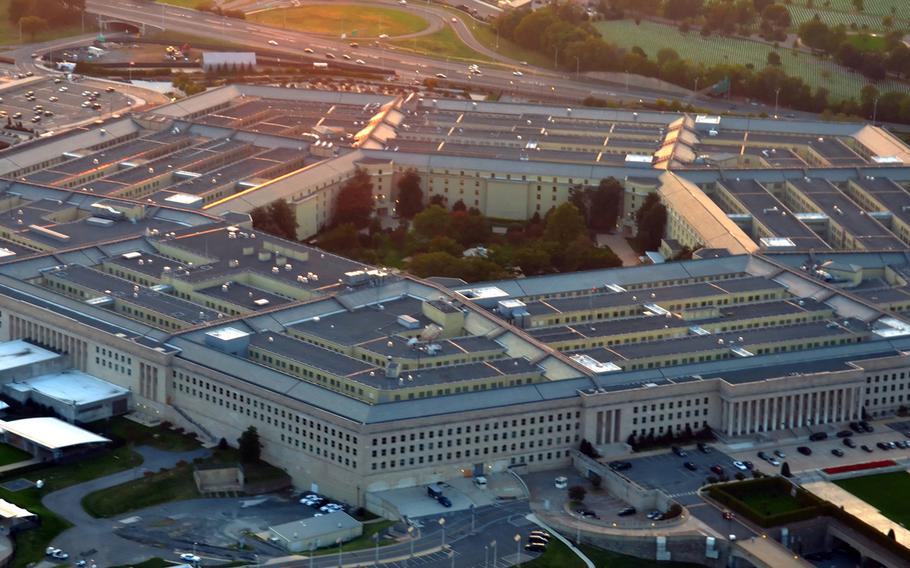
The Pentagon in Arlington County, Va. (Dreamstime/TNS)
WASHINGTON (Tribune News Service) — The defense policy bill the House passed last week would make sweeping changes to how the Defense Department handles vehicle safety.
Included in the mammoth, $768 billion fiscal 2022 National Defense Authorization Act are four provisions and one amendment that would direct the Pentagon to implement changes recommended by Congress, create a DOD-wide safety council and change the way the department handles vehicle accident investigations.
The NDAA language is at least in part the result of years of lobbying by the families of servicemembers killed during training.
“I think this is major progress, but there is more to do,” said Michael McDowell, the father of Lt. Conor McDowell, who was killed in May 2019 when, during a training exercise at Camp Pendleton in California, his light armored vehicle rolled off a cliff into a crevice that was hidden by tall weeds. He died instantly.
“The reforms are significant, and we’re two-thirds of the way to reducing death tolls and horrific injuries, but the next priority is to address the lack of leadership in terms of flag officers accepting responsibility on safety, which is part of their job, and being held accountable,” McDowell said.
Watchdog recommendations
Since Conor’s death, McDowell and his wife, Susan, have lobbied hard to prevent future military vehicle accidents. They asked members of Congress to task the Government Accountability Office, a watchdog agency for the legislative branch, with investigating what they said was a pattern of military training deaths involving vehicles across the services.
That investigation found that a lack of adequate driver training and a failure to implement safety practices were the most common causes of Army and Marine Corps vehicle rollovers over the past decade.
In the past 14 years, nearly four times as many service members have died in training accidents as in combat, according to the Congressional Research Service.
The GAO report also found the drivers of vehicles often have limited or rushed training. And when drivers are trained, there is no system in place to ensure they are capable of driving in diverse conditions, including at night or on difficult terrain.
Now, an amendment to the House’s NDAA by Vern Buchanan, R-Fla., directs the Pentagon to implement all of the GAO’s recommendations, which include developing risk management procedures across the Army and Marine Corps, improving driver training programs and implementing ways to better communicate hazardous driving conditions between units.
Buchanan became involved in the push to reform how the DOD handles vehicle training accidents following the death of his constituent, Army Spc. Nicholas Panipinto, who flipped and rolled a combat vehicle he was driving during a Nov. 6, 2019, road test at South Korea’s Camp Humphreys, the U.S. military’s largest overseas base.
The emergency response to the rollover was plagued by a series of vehicle and equipment problems and other mishaps that delayed lifesaving treatment. The 20-year-old ultimately died.
“Improving the training capabilities of our armed forces has remained one of my top priorities since the heartbreaking death of my constituent, Nicholas Panipinto,” said Buchanan in a press release. “I am pleased to see the House take action and approve my amendment to implement these commonsense proposals to prevent future training accidents and more importantly, save lives.”
Safety provisions
Another provision in the Pentagon policy bill would direct the secretaries of the Army and the Navy to carry out a pilot program that evaluates the feasibility of using data recording devices on combat vehicles, similar to black boxes on airplanes.
The devices would record and transmit data on the status of the vehicles, the driver and the vehicle’s surroundings during regular use to assist commanders in better understanding how the vehicles are used, and what happens during an accident.
The bill also contains language that would establish a joint safety council within the office of the deputy secretary of defense that would be responsible for updating vehicle safety and accident investigation regulations, establishing a uniform accident data collection system and reviewing the safety management system of each service, among other responsibilities.
And finally, the measure would direct the deputy secretary of defense to develop a proposal for a “Mishap Investigation Review Board.” The board would provide independent oversight of safety investigations carried out by the Pentagon and would evaluate the circumstances surrounding operational and training accidents.
Next, the Senate will consider its version of the NDAA, which its Armed Services Committee approved in July. Presuming the Senate passes it, a House-Senate conference will reconcile differences before both chambers vote on sending the bill to President Joe Biden.
Advocates like McDowell hope that the bipartisan nature of military safety proposals will insulate the House provisions from being stripped from the final bill.
©2021 CQ-Roll Call, Inc., All Rights Reserved.
Visit cqrollcall.com.
Distributed by Tribune Content Agency, LLC.